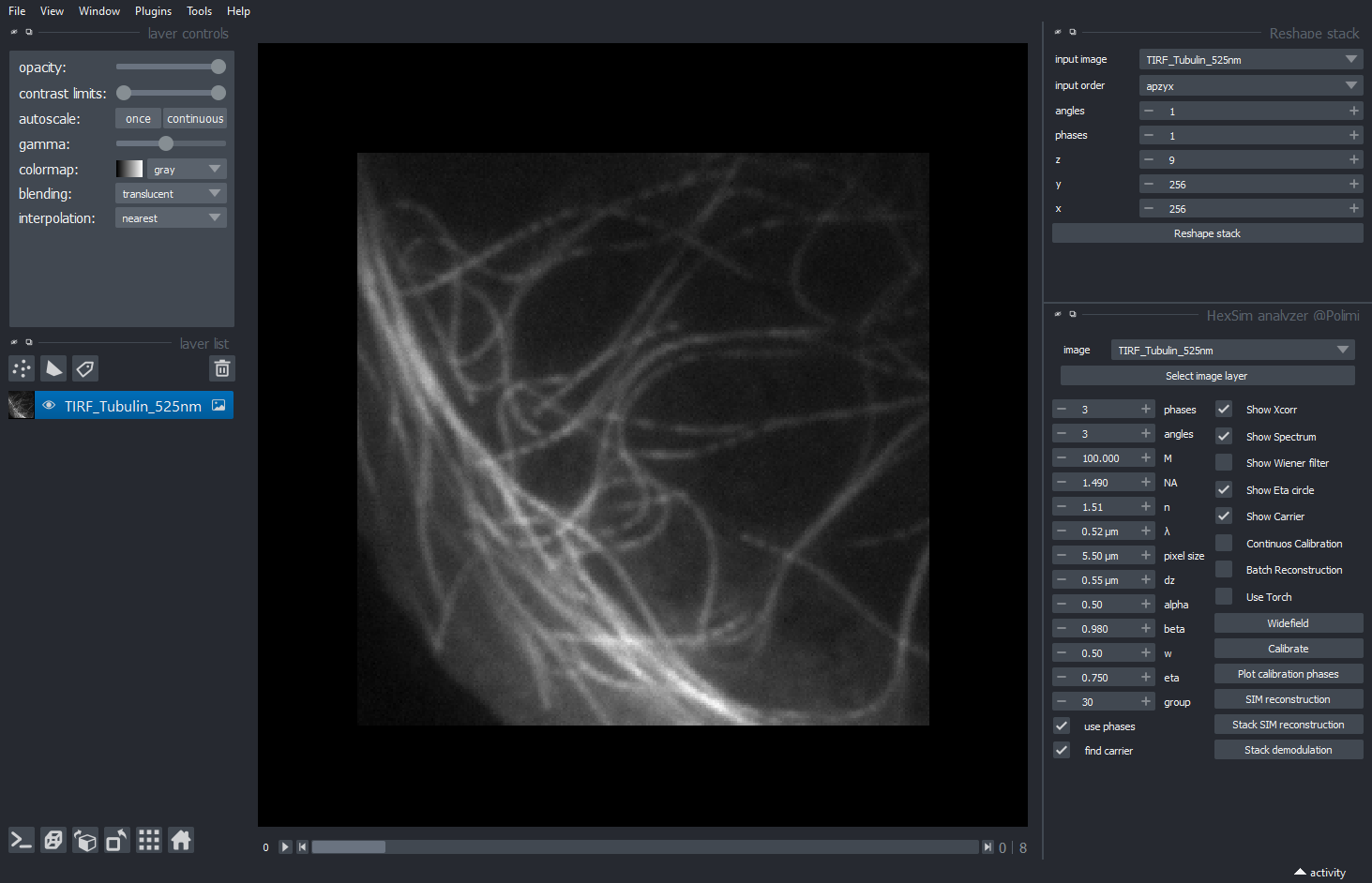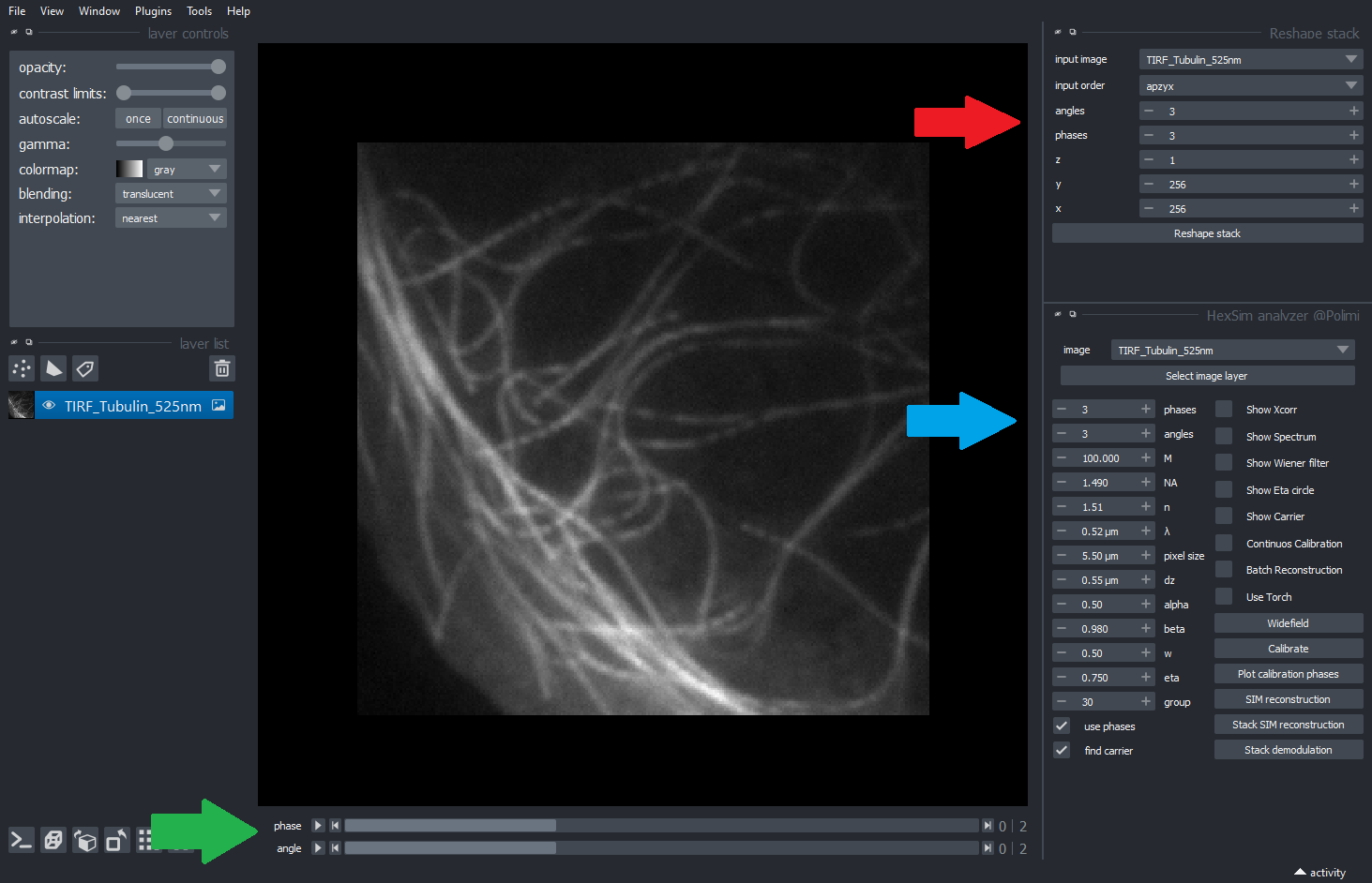A napari widget to process Structured Illumination Microscopy data with gpu acceleration
Project description
napari-sim-processor
A Napari plugin for the reconstruction of Structured Illumination Microscopy (SIM) with GPU acceleration (with pytorch, if installed). Currently supports:
- conventional SIM data with a generic number of angle and phases (typically, 3 angles and 3 phases are used for resolution improvement in 2D)
- hexagonal SIM data with 7 phases.
The SIM processing widget accepts image stacks organized in 5D (angle,phase,z,y,x).
The reshape widget can be used to easily reshape the data if they are not organized as 5D (angle,phase,z,y,x).
Currently only square images are supported (x=y)
For raw image stacks with multiple z-frames each plane is processed as described here: https://doi.org/10.1098/rsta.2020.0162
Support for 3D SIM with enhanced resolution in all directions is not yet available. Multicolor reconstruction is not yet available.
This napari plugin was generated with Cookiecutter using @napari's cookiecutter-napari-plugin template.
Installation
You can install napari-sim-processor via pip:
pip install napari-sim-processor
To install latest development version :
pip install git+https://github.com/andreabassi78/napari-sim-processor.git
Usage
-
Open napari.
-
Launch the reshape and sim-processor widgets.
-
Open your raw image stack (using the napari built-in or your own file openers).
-
If your image is ordered as a 5D stack (angle, phase, z-frame, y, x) go to point 6.
-
In the reshape widget, select the actual number of acquired angles, phases, and frames (red arrow) and press
Reshape Stack. Note that the label axis of the viewer will be updated (green arrow).
-
In the sim-reconstruction widget press the Select image layer button. Note that the number of phases and angles will be updated (blue arrow).
-
Choose the correct parameters of the SIM acquisition (
NA,pixelsize,M, etc.) and processing parameters (alpha,beta, w,eta,group):w: parameter of the Weiner filter.eta: constant used for calibration. It should be slightly smaller than the carrier frequency (in pupil radius units).group: for stacks with multiple z-frames, it is the number of frames that are used together for the calibration process.
For details on the other parameters see https://doi.org/10.1098/rsta.2020.0162.
-
Calibrate the SIM processor, pressing the
Calibratebutton. This will find the carrier frequencies (red circles if theShow Carriercheckbox is selected), the modulation amplitude and the phase, using cross correlation analysis. -
Click on the checkboxes to show the power spectrum of the raw image (
Show power spectrum) or the cross-correlation (Show Xcorr), to see if the found carrier frequency is correct.
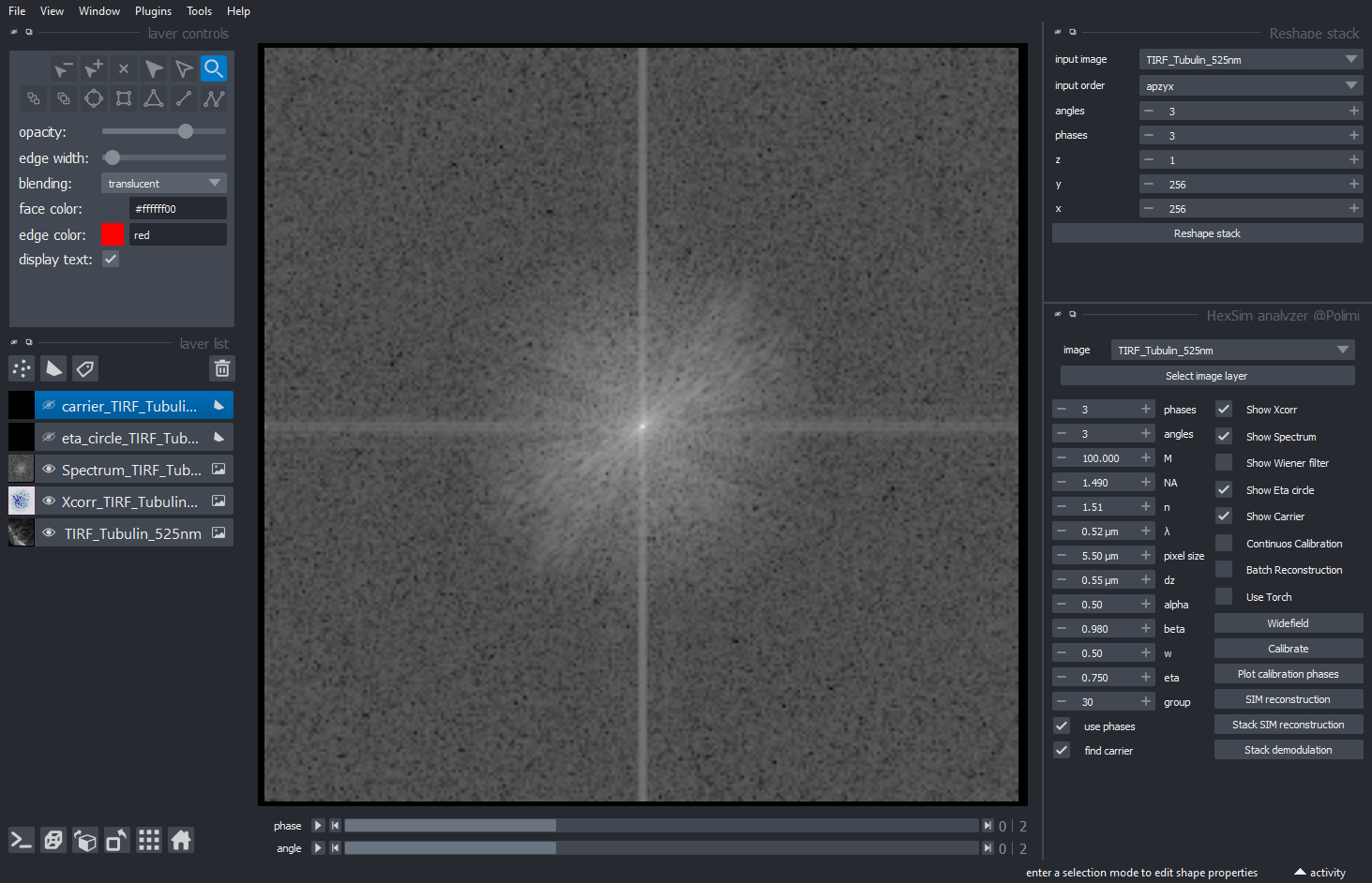
eta is shown in green.
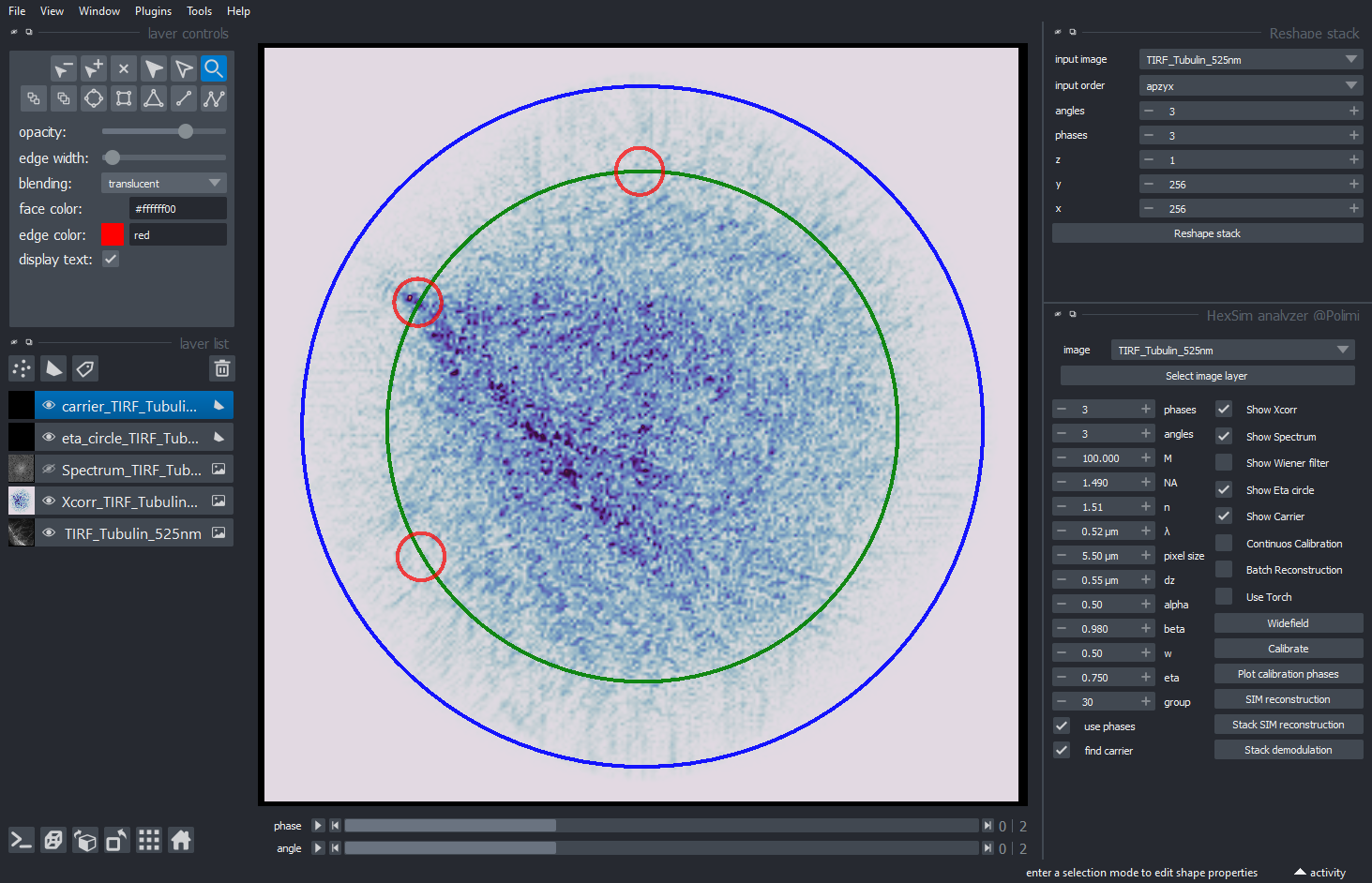
- Run the reconstruction of a single plane (
SIM reconstruction) or of a stack (Stack reconstruction). After execution, a new image_layer will be added to the napari viewer. Click on theBatch reconstructioncheckbox in order to process an entire stack in one shot. Click on the pytorch checkbox for gpu acceleration.
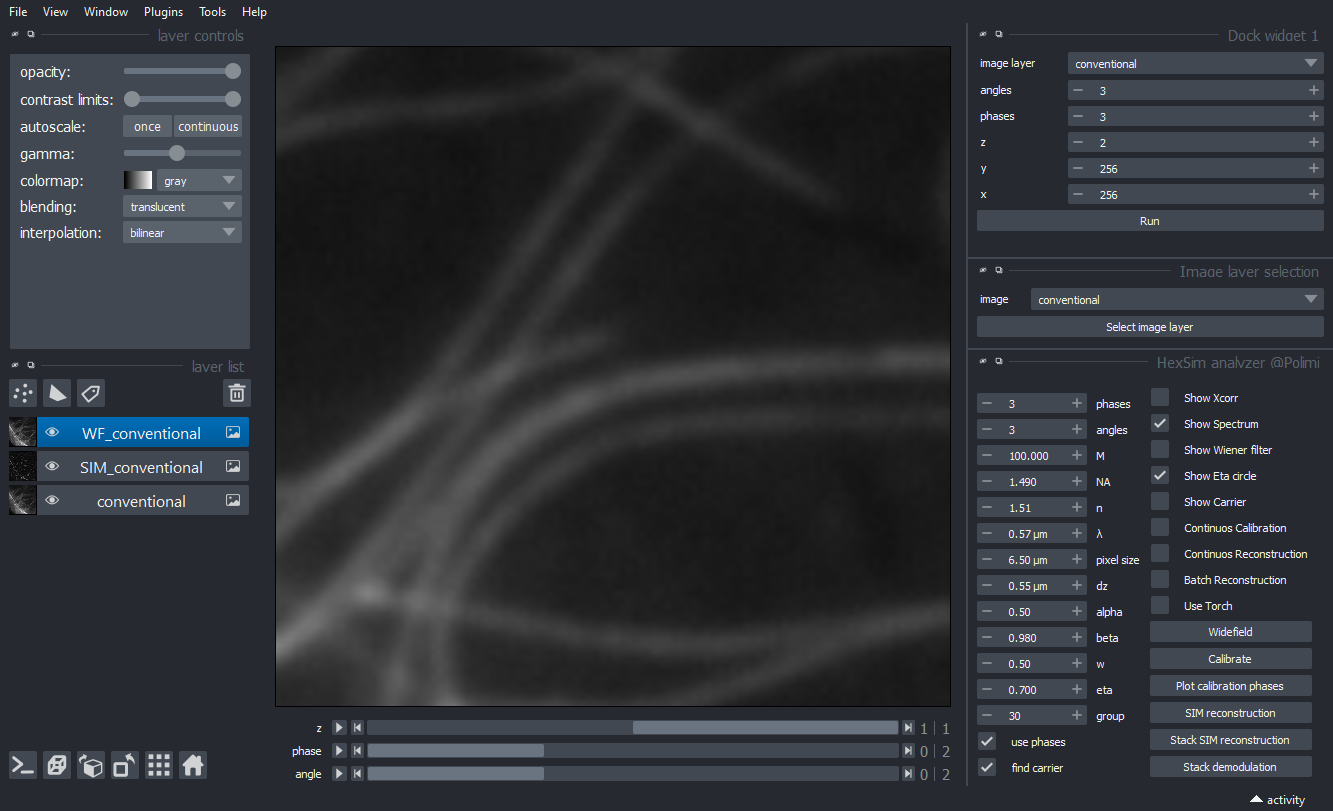
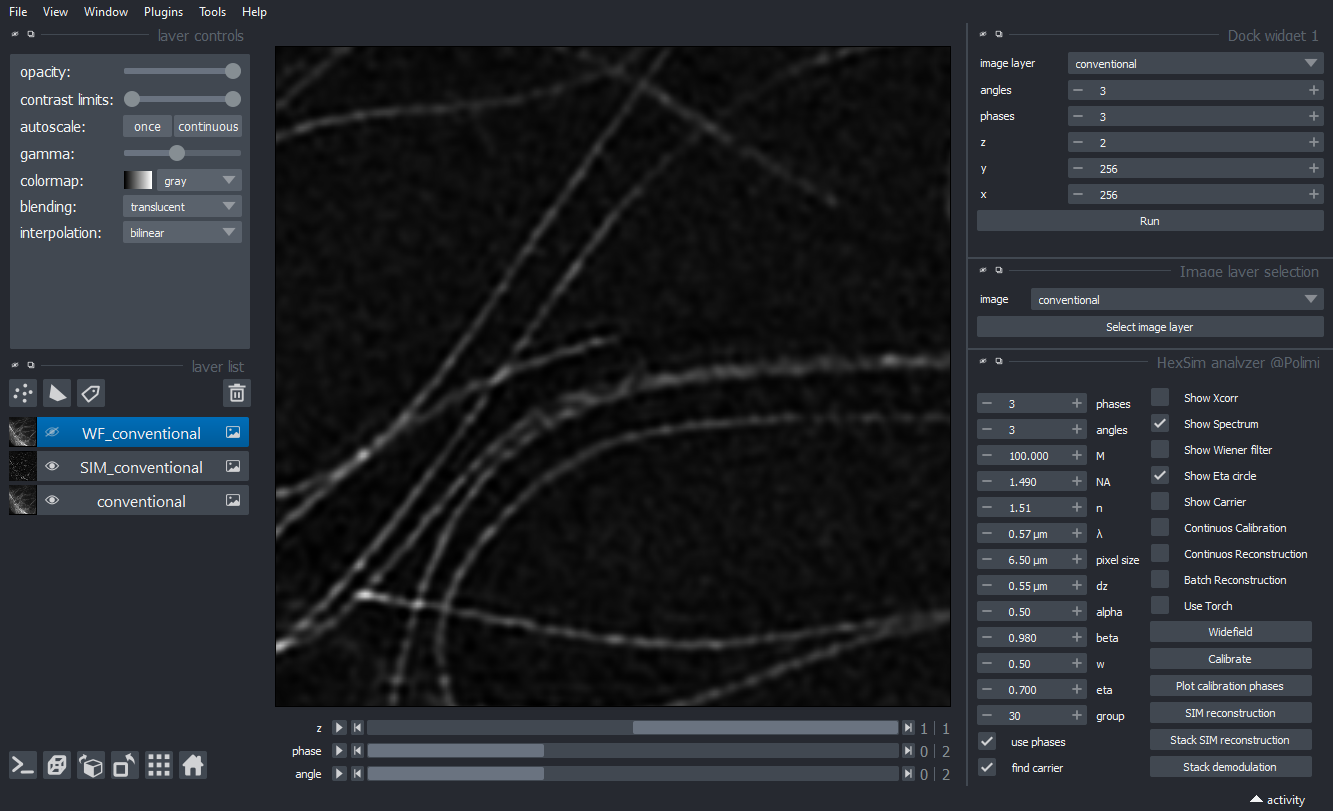
GPU processing
The underlying processing classes will use numpy (and FFTW if available) for its calculations. For GPU accelerated processing you need to have either the PyTorch (tested with torch v1.11.0+cu113) or the CuPy (tested with cupy-cuda113 v10.4.0) package installed. Make sure to match the package cuda version to the CUDA library installed on your system otherwise PyTorch will default to CPU and CuPy will not work at all.
Both packages give significant speedup on even relatively modest CUDA GPUs compared to Numpy, and PyTorch running on the CPU only can show improvements relative to numpy and FFTW. Selection of which processing package to use is via a ComboBox in the napari_sim_processor widget. Only available packages are shown.
Other than requiring a CUDA GPU it is advisable to have significant GPU memory available, particularly when processing large datasets. Batch processing is the most memory hungry of the methods, but can process 280x512x512 datasets on a 4GB GPU.
Contributing
Contributions are very welcome. Tests can be run with tox, please ensure the coverage at least stays the same before you submit a pull request.
License
Distributed under the terms of the BSD-3 license, "napari-sim-processor" is free and open source software
Issues
If you encounter any problems, please file an issue along with a detailed description.
Project details
Release history Release notifications | RSS feed
Download files
Download the file for your platform. If you're not sure which to choose, learn more about installing packages.
Source Distribution
Built Distribution
Hashes for napari-sim-processor-0.0.8.tar.gz
| Algorithm | Hash digest | |
|---|---|---|
| SHA256 | 37317ee11a827b2a12f7aafc1099ec60e3e988e5494effa1aebd82c0abec34f3 |
|
| MD5 | 981d4320a64e284fa070f4ee8e5d81e3 |
|
| BLAKE2b-256 | e6f8c9b78b34e23c7153e8dc7337a7b9c424f44728825520f46ed3d6f5774a2e |
Hashes for napari_sim_processor-0.0.8-py3-none-any.whl
| Algorithm | Hash digest | |
|---|---|---|
| SHA256 | 4403891f0f09997ccebac264df9150856319cae7a8eb1d1f317ba8d4e9f4ff84 |
|
| MD5 | ae6676e5e09008b443cecff8041700b6 |
|
| BLAKE2b-256 | 6070af06dc5271d58b566ab72bab2fd599c3b7038ef1ef67509676ee0abdf63b |








